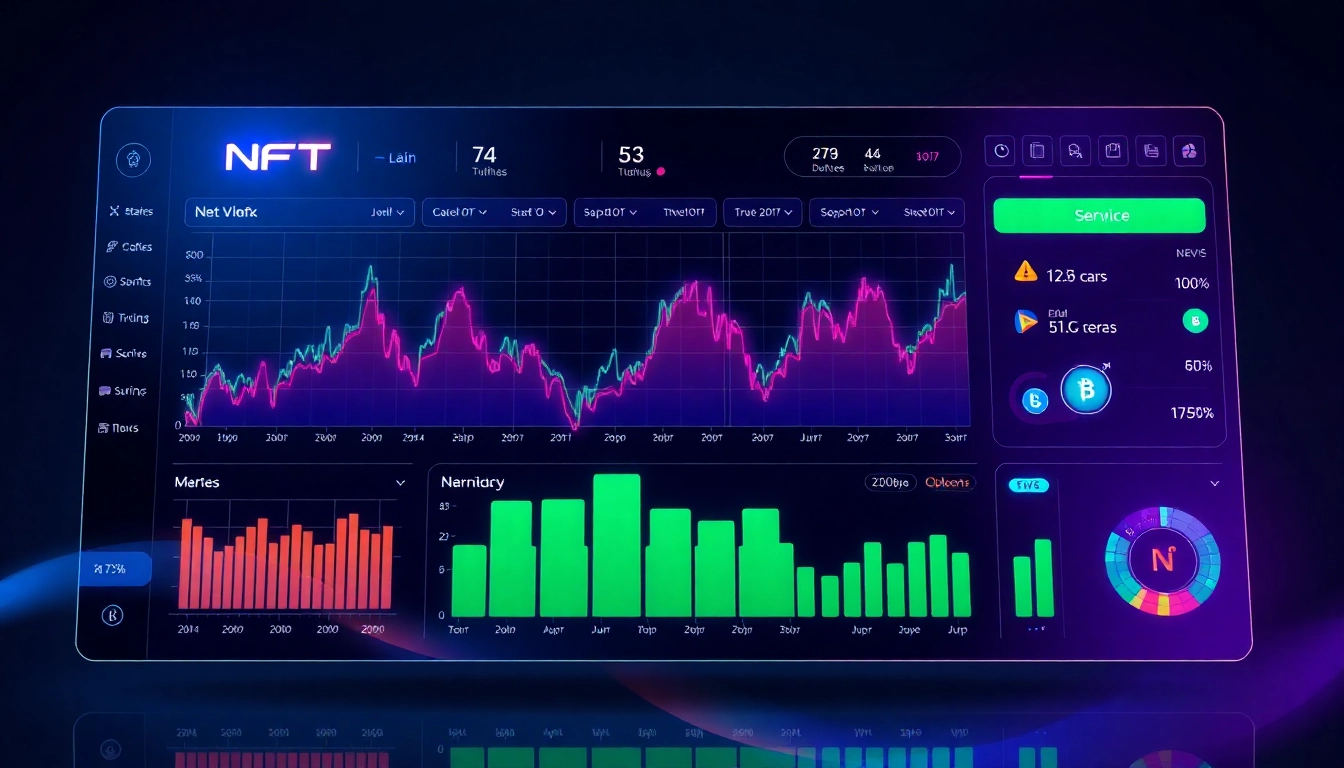The Basics of Trading View: Understanding Customized Charting Tools
For traders and investors seeking to enhance their market analysis, understanding the fundamentals of trading view is essential. Trading platforms like TradingView have revolutionized the way market participants interpret data, enabling both novices and seasoned professionals to make informed decisions. This section explores the core features, navigation, and interface that make TradingView a powerful tool for charting and analysis.
Navigation and Interface Overview
TradingView’s user-friendly interface is designed for efficiency and customization. Upon logging in, traders are greeted with a dashboard facilitating easy access to multiple charts, watchlists, alerts, and community insights. The main navigation menu provides quick links to market data, technical analysis tools, social features, and account settings. The charting workspace itself is highly customizable, allowing users to arrange tools vertically or horizontally, resize panels, and toggle views based on individual preferences.
The left sidebar houses drawing tools such as trend lines, Fibonacci retracements, and annotations, offering visual aids to technical analysis. The right sidebar consolidates key features like alerts, watchlists, and indicators. At the top, users can select different timeframes, chart types (candlestick, bar, line), and customize color schemes for clarity and aesthetic appeal.
This intuitive layout reduces the learning curve, enabling beginners to navigate effortlessly while providing advanced users with robust tools for detailed analysis. The platform’s responsiveness across devices ensures traders can operate seamlessly whether on desktop, tablet, or smartphone.
Setting Up Your First Trading Charts
Getting started with TradingView involves establishing your initial charts to monitor desired assets. Begin by searching for the asset symbol, such as “AAPL” for Apple stocks or “BTCUSD” for Bitcoin, using the search bar. Once selected, the chart immediately populates with real-time data.
You can customize your chart by selecting the preferred time interval – from one minute to monthly views – depending on your trading horizon. Adding technical indicators like Moving Averages or RSI involves clicking the Indicators button and choosing from hundreds of available tools. The platform’s flexibility allows you to set multiple overlays, compare assets side-by-side, and apply different chart styles for optimal clarity.
Implementation of saved layouts enables traders to preserve specific configurations for different trading strategies or markets. For beginners, it’s advisable to start with simple chart setups, gradually integrating more complex indicators as confidence and expertise grow.
Key Features for Beginners
TradingView offers an array of features tailored to those new to market analysis, including:
- Predefined Templates: Save your preferred chart setups and quickly access them for different assets.
- Interactive Tutorials: Access built-in guides and community tutorials designed to boost learning.
- Community Ideas: Explore trading ideas shared by other users, providing real-world examples and inspiration.
- Price Alerts: Set notifications for price movements or indicator levels without needing constant monitoring.
- Mobile Compatibility: Sync your account across devices, enabling analysis on-the-go.
These beginner-friendly tools streamline the learning process, making technical analysis accessible and engaging for new traders.
Advanced Trading View Techniques for Experienced Traders
Implementing Technical Indicators Effectively
Experienced traders leverage a vast universe of technical indicators within TradingView to refine their strategies. Success lies in understanding not only how to add indicators but also how to interpret them accurately and combine them judiciously.
Popular indicators include Moving Averages (for trend direction), the Relative Strength Index (for momentum), and Bollinger Bands (for volatility). Effective use involves adjusting parameters to fit the asset’s behavior and trading timeframe. Combining indicators in a complementary manner — for instance, using MACD alongside RSI — enhances signal reliability.
Advanced users often create custom indicators using Pine Script, TradingView’s scripting language. This permits tailoring signals specifically to individual trading styles, whether scalping or long-term investing.
Utilizing Alerts to Maximize Trading Opportunities
Market movements are dynamic, and timely alerts are crucial for capturing fleeting opportunities. TradingView’s alert system allows users to configure notifications based on price levels, indicator conditions, or complex custom scripts.
To set an alert, right-click on a chart or use the alert button at the top. Alerts can be configured to send notifications via email, SMS, or app notifications. Smart alert conditions include crossing moving averages, price reaching support/resistance levels, or indicator divergence.
Proactive alert management ensures traders are alerted on critical market shifts without constantly observing the screens, enabling better focus and more disciplined execution.
Integrating Trading View with Other Platforms
Integration expands TradingView’s utility beyond standalone analysis. Many trading platforms, such as brokers or order execution services, offer direct connection options. For example, TradingView’s brokerage integrations enable one-click order placement directly from charts.
Using third-party widgets or APIs, traders can embed TradingView charts into personal websites or trading dashboards. Furthermore, social trading features allow sharing setups, strategies, and insights across different platforms or through community channels.
Proper integration streamlines workflows, reduces lag in execution, and enhances overall trading efficiency.
Optimizing Your Market Strategies with Trading View
Developing Custom Trading Strategies
Creating a reliable trading strategy involves combining technical analysis with disciplined risk management. TradingView facilitates this through its strategy tester, which allows backtesting of systematic approaches over historical data.
By setting entry, exit, and stop-loss criteria within Pine Script or the strategy interface, traders can evaluate performance metrics such as profit factor, drawdown, and win rate. Optimizing these parameters involves iterative testing and refinement, leading to more robust strategies.
Using community scripts and templates can accelerate development, but due diligence and validation are necessary before deploying live.
Backtesting Performance and Adjusting Tactics
Backtesting provides critical insights into a strategy’s viability. TradingView’s strategy tester simplifies this process by visually displaying trades, equity curves, and statistics.
To start, set specific parameters—such as risk-reward ratios, indicator thresholds, and timeframes—and run simulations against historical data. Analyzing outcomes unveils weaknesses and potential improvements. Continuous iteration and scenario testing enable traders to adapt tactics to changing market conditions.
It’s vital to incorporate realistic assumptions, including slippage and transaction costs, for accurate results.
Sharing and Analyzing Community Ideas
The social aspect of TradingView fosters a vibrant community where traders share setups, ideas, and analyses. Reviewing community-made ideas can provide fresh perspectives and educational value.
Engaging with others’ strategies, providing feedback, or customizing shared scripts helps refine your skills. Moreover, analyzing successful community ideas can serve as templates for developing your own approaches.
Active participation not only enhances understanding but also opens avenues for collaborative learning.
Mobile and Desktop Trading View Solutions
Comparing Apps for On-the-Go Trading
Mobile trading apps have become indispensable for today’s dynamic markets. TradingView’s mobile applications for iOS and Android feature full charting capabilities, alerts, and social interactions comparable to the desktop version.
The app offers real-time data, customizable watchlists, and push notifications, empowering traders to act instantly regardless of location. The desktop platform, on the other hand, provides an expansive workspace suited for detailed analysis and multiple chart setups.
Ensuring Seamless Cross-Device Experience
Synchronization across devices ensures consistency in analysis and trade execution. TradingView’s cloud-based account system maintains your saved layouts, indicators, and alerts accessible everywhere.
This seamless experience eliminates disruption, allowing traders to transition smoothly between mobile, tablet, and desktop environments without reconfiguration or data loss.
Maximizing Notifications and Real-Time Data
Effective use of notifications is vital for timely decisions. Configuring alerts tailored to specific asset movements, indicator thresholds, or custom scripts keeps traders informed instantly. Push notifications on mobile devices ensure urgent updates reach users promptly, enabling swift actions.
Moreover, TradingView’s real-time data feeds—integrated directly with major exchanges—ensure that traders operate with the most current market information, which is critical for high-frequency and breakout strategies.
Future Trends and Tips for Trading View Users
Emerging Features and Updates
TradingView continues to innovate by introducing features like AI-driven analysis, enhanced scripting capabilities, and expanded broker integrations. Upcoming updates are expected to incorporate more advanced analytics, such as predictive modeling and sentiment analysis.
Staying informed about these developments through official channels allows traders to leverage new tools proactively and maintain a competitive edge.
Best Practices for Continuous Improvement
Successful traders adopt a mindset of continual learning. Regularly exploring new features, participating in community discussions, and reviewing personal performance metrics foster growth.
Implementing disciplined routines—like daily review of charts, systematic backtesting, and journaling—helps refine strategies and adapt to evolving markets.
Resources and Support for Traders
TradingView offers extensive resources, including official tutorials, webinars, and a supportive community forum where users exchange knowledge. Participating in webinars or subscribing to official blogs ensures access to expert insights and best practices.
Engaging with customer support and exploring third-party educational content further enhances your capacity to utilize TradingView effectively.



